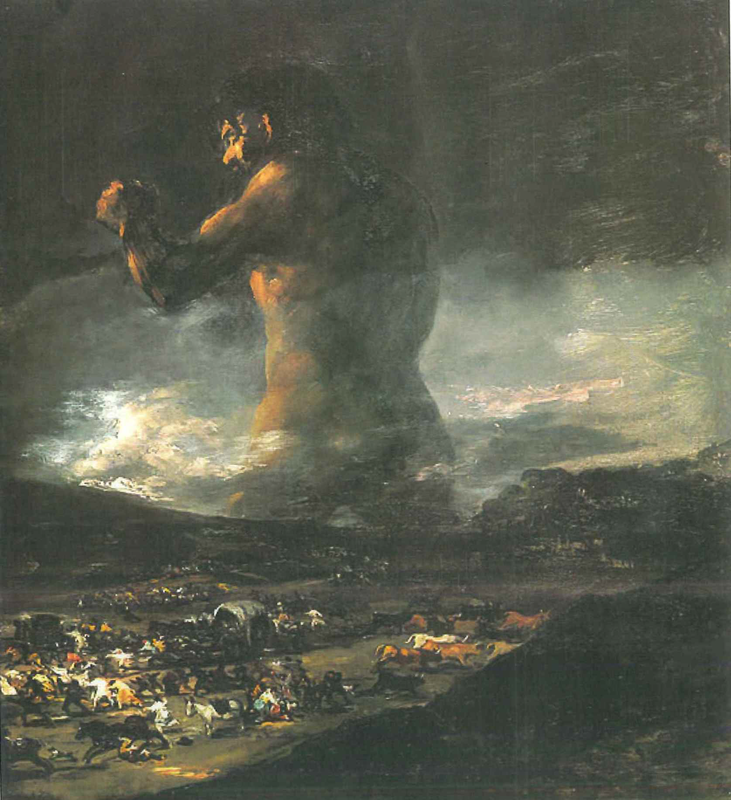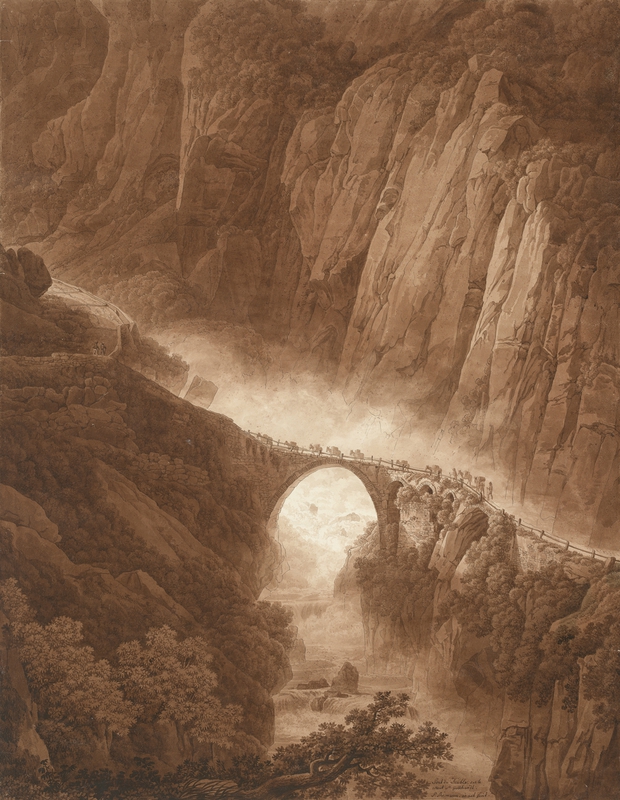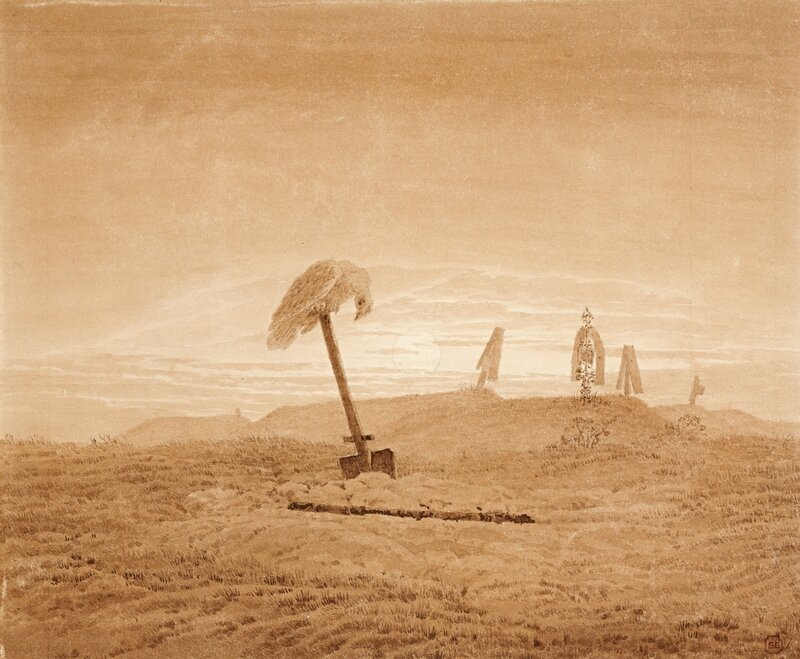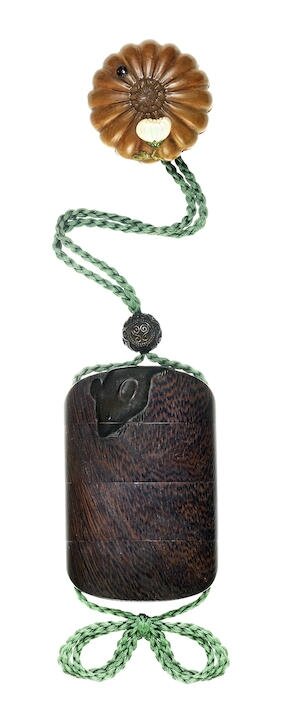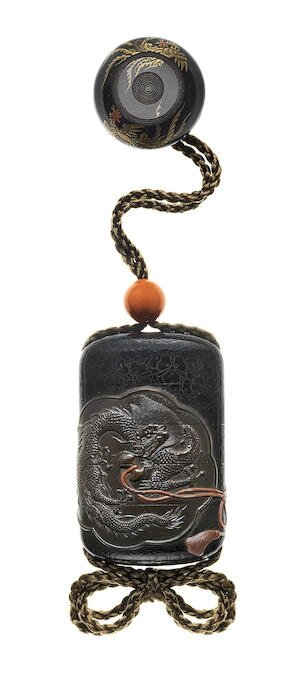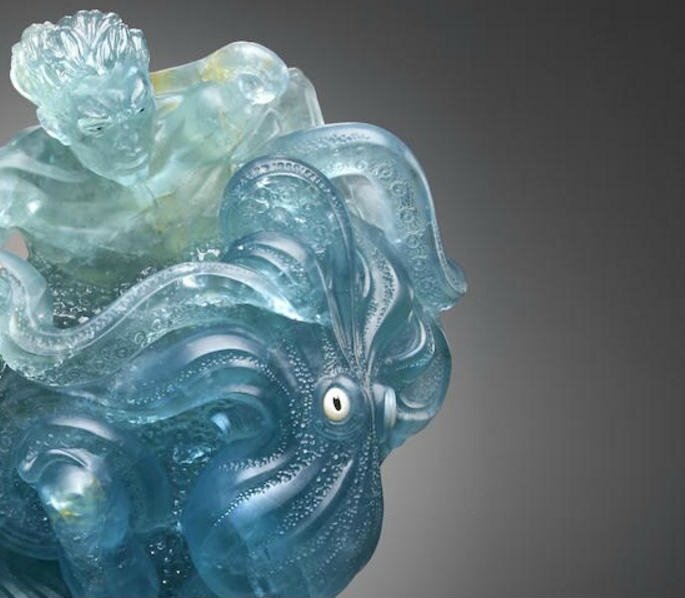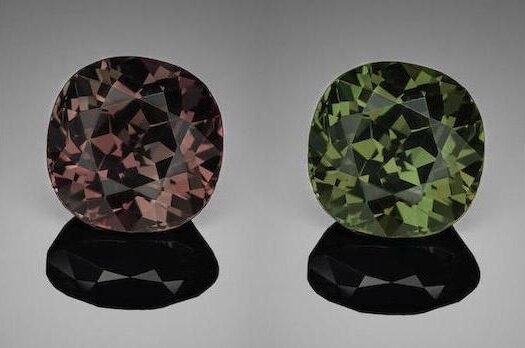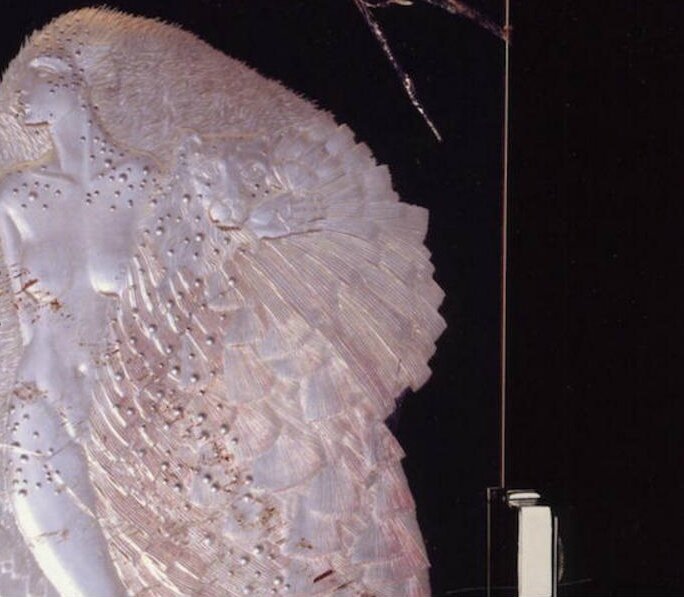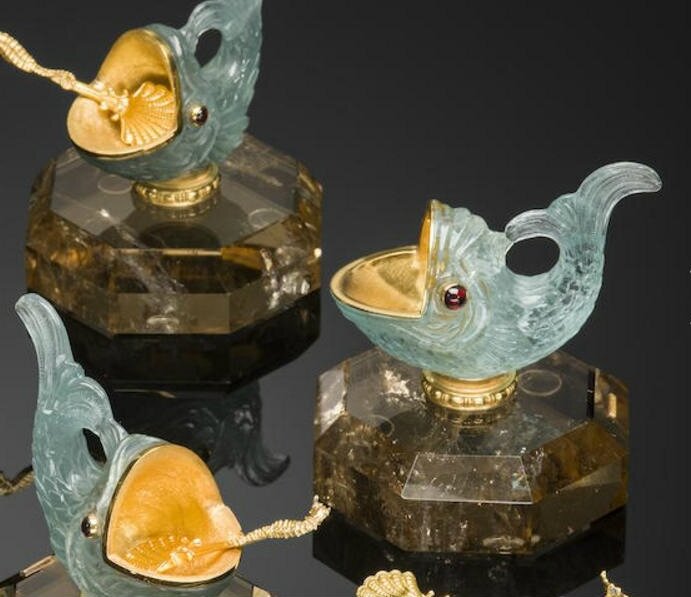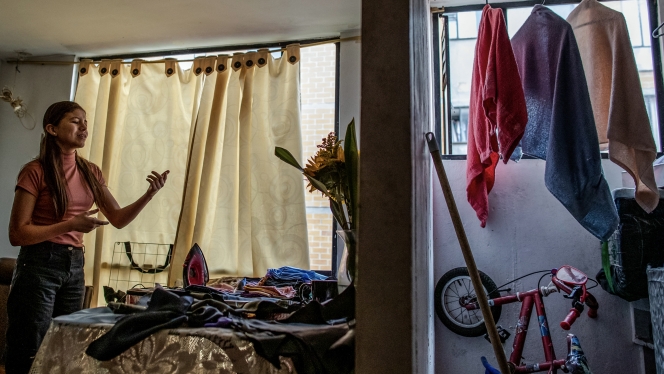![04]()
Retro Diamond Bracelet, Boucheron, circa 1940 (Lot 1519) Est. HK$480,000 – 650,000 / US$60,000 – 80,000. Photo Sotheby's
HONG KONG.- Sotheby’s Hong Kong Fine Jewels and Jadeite Sale will take place on 2 December at Sotheby’s Hong Kong Gallery. Beautiful vintage pieces will be offered alongside desirable gemstones, diamonds and jadeite and branded jewellery. The sale will also include an Asian private collection, as well as a charity session to benefit Playright Children’s Play Association# – Hospital Play Service to help children and their families cope with their fear, illness and medical treatments in hospitals through a variety of therapeutic play services.
QUEK Chin Yeow, Deputy Chairman, Asia and Chairman, International Jewellery, Asia, says, “We are delighted to offer in the upcoming sale of Fine Jewels and Jadeite a wonderful selection of properties comprising charming signed pieces from celebrated jewellers, coloured gemstones, diamonds and jadeite jewellery. With the festive season fast approaching, Sotheby’s again is honoured to feature a charity session in the sale to benefit Playright Children’s Play Association. I would like to thank the generous donors for their contribution, and I invite jewellery lovers and collectors to join us in bringing happiness to children coping with medical conditions, while celebrating the holiday season with beautiful jewellery.”
Highlights of the sale:
VINTAGE JEWELLERY
![03]()
![05]()
Retro Diamond Bracelet, Boucheron, circa 1940 (Lot 1519) Est. HK$480,000 – 650,000 / US$60,000 – 80,000. Photo Sotheby's
Of architectural design, the centre highlighted by three brilliant-cut diamonds, flanked on each side by two tiers of emerald-cut diamonds, to the diamond-set lugs and clasp, integrated with an articulated bracelet enhanced by diamond-set borders, the diamonds together weighing approximately 14.50 carats, mounted in platinum, signed Boucheron Paris, length adjustable, approximately 155 to 165mm.
The House of Boucheron, founded by Frédéric Boucheron in 1858, was the first jeweller to settle in Place Vendôme in Paris. The maison was also the only French buyer at the French crown jewels auction in 1887, from which Frédéric Boucheron purchased the infamous Mazarin diamond that he later set into a ring for his beloved wife. Known as an expert in precious stones, a masterful technician and a creator of beautiful jewellery, Boucheron’s creation is marked by its audacity and innovative spirit, such is evident in its signature ‘point d’interrogation’ necklace and for creating the first wristwatch for men. Much adored by royalties and celebrities, as well as members of the high society in Europe and America, Boucheron has accrued a respectable list of patrons, including Grand Duke Alexander, Empress Alexandra, Viscountess Harcourt, Maharajah of Patiala, Mrs Madeleine Astor, just to name a few.
Boucheron’s work spanned multiple design eras, and this retro diamond bracelet captures the spirit of the time with the elaborate use of large diamonds, voluminous curves and carefully thought-out clasp detail – a true expression of Boucheron’s savoir-faire and extravagance.
![6]()
![7]()
Yellow Diamond and Diamond 'Ribbon Bow' Brooch, Circa 1900 (Lot 1427) Est. HK$160,000 – 240,000 / US$20,000 – 30,000. Photo Sotheby's
Of ribbon bow design set with old-cut diamonds and intense orangy yellow diamonds, completed by pear-shaped diamond terminals, the old-cut diamonds and orangy yellow diamonds together weighing approximately 10.00 and 3.75 carats respectively, mounted in 18 karat yellow gold and platinum.
FINE COLOURED GEMSTONES AND JADEITE
![8]()
![9]()
Pair of Burmese ‘Pigeon’s Blood’ Ruby and Diamond Earrings, rubies totalling 6.62 carats (Lot 1422) Est. HK$1,800,000 – 2,200,000 / US$230,000 – 280,000. Photo Sotheby's
Each centring on an oval ruby altogether weighing approximately 6.62 carats, to a pear-shaped diamond cluster surround enhanced by circular-cut diamond frames, the diamonds altogether weighing approximately 6.20 carats, mounted in platinum.
Accompanied by GIA and SSEF reports numbered 7152589638 and 82270, dated 13 June 2014 and 25 September 2015 respectively, stating that the rubies are natural, of Burmese (Myanmar) origin, with no indications of heating. GIA stated that the colour appearance of these stones is described in the trade as "Pigeon’s Blood".
![10]()
![11]()
3.49-carat Kashmir Sapphire and Diamond Ring (Lot 1420) Est. HK$2,000,000 – 2,400,000 / US$250,000 – 300,000. Photo Sotheby's
Centring on a cushion-shaped sapphire weighing approximately 3.49 carats, to the circular-cut diamond foliate surround and shoulders, mounted in 18 karat white and yellow gold. Ring size: 5
Accompanied by Gübelin and SSEF reports numbered 15067378 and 79849, dated 30 June 2015 and 17 April 2015 respectively, stating that the sapphire is natural, of Kashmir origin, with no indication of heating.
A TRUE COLLECTOR GEM FROM KASHMIR
A remote valley in the Padar region of Kashmir, amidst the Himalayan Mountains between Pakistan and China, is home to one of the greatest gemstones in the world: Kashmir sapphires. The finest specimens from Kashmir are known for their soft and velvety, yet rich and lustrous blue colour, often described as 'cornflower blue'. However, the legendary mine was short-lived and depleted near the end of the 19th century, such wonders of nature are exceedingly rare in the market nowadays. This Kashmir sapphire, weighing 3.49 carats and free from heat treatment, is a true treasure for gemstone connoisseurs and a true collector gem.
![12]()
![13]()
Pair of Jadeite ‘Peapod’ and Diamond Pendent Earrings (Lot 1508) Est. HK$1,200,000 – 1,500,000 / US$150,000 – 190,000. Photo Sotheby's
Each suspending a highly translucent jadeite of emerald green colour, carved as a peapod surrounded by circular-cut diamonds, to a surmount set with circular-cut, pear-and marquise-shaped diamonds, the diamonds altogether weighing approximately 2.35 carats, mounted in 18 karat white gold.
Peapods approximately 33.39 x 10.59 x 3.95mm and 33.17 x 10.50 x 3.73mm respectively.
Accompanied by two Hong Kong Jade & Stone Laboratory certificates numbered KJ 91371 and KJ 91372, both dated 23 September 2015, stating that the jadeites are natural, known in the trade as “A Jade”.
FLAWLESS DIAMONDS
![14]()
![15]()
5.04-carat Internally Flawless Fancy Vivid Yellow Diamond and Diamond Ring (Lot 1402) Est. HK$1,800,000 – 2,200,000 / US$230,000 – 280,000. Photo Sotheby's
Centring on an oval fancy vivid yellow diamond weighing 5.04 carats, surrounded by marquise-shaped diamonds together weighing approximately 1.80 carats, to the circular-cut diamond shoulders, mounted in 18 karat white gold. Ring size: 4½
Accompanied by GIA report numbered 2155995769, dated 27 March 2014, stating that the 5.04 carat diamond is natural, Fancy Vivid Yellow colour, Internally Flawless clarity.
![16]()
4.06-carat Internally Flawless Light Pink Diamond, Blue Diamond and Diamond Ring (Lot 1465) Est. HK$1,800,000 – 2,200,000 / US$230,000 – 280,000. Photo Sotheby's
Centring on a cut-cornered rectangular mixed-cut light pink diamond weighing 4.06 carats, flanked on each side by a tapered baguette fancy greyish blue diamond and fancy blue diamond weighing 0.16 carat and 0.14 carat respectively, to the circular-cut diamond borders, mounted in platinum. Ring size: 5¾
Accompanied by GIA report numbered 1176071977, dated 31 March 2015, stating that the 4.06 carat diamond is natural, Light Pink colour, Internally Flawless clarity. Also accompanied by two GIA reports numbered 5172173998 and 1176173995, both dated 21 May 2015, stating that the 0.16 and 0.14 carat diamonds are natural, Fancy Greyish Blue and Fancy Blue colour respectively.
![17]()
Pair of D-colour Internally Flawless Diamond Earrings, 2.02 carats each (Lot 1463) Est. HK$900,000 – 1,200,000 / US$115,000 – 155,000. Photo Sotheby's
Each centring on a brilliant-cut diamond weighing 2.02 carats, to a surround set with brilliant-cut diamonds, mounted in 18 karat white gold, with detachable diamond-set jackets.
Accompanied by two GIA reports numbered 2145091619 and 2135891435, dated 14 November 2011 and 22 September 2011 respectively, stating that both 2.02 carat diamonds are D colour, Internally Flawless clarity.
BRANDED JEWELLERY
![18]()
Sapphire and Diamond Necklace and Matching Earclips, Bulgari (Lot 1539). From an Asian Private Collection. Est. HK$150,000 – 200,000 / US$19,000 – 25,000. Photo Sotheby's
The necklace suspending to the front with five cabochon sapphires fringes weighing approximately 23.00 carats, decorated by circular-cut diamonds together weighing approximately 13.80 carats, length approximately 365mm; and the matching pair of earclips, each centring on a cabochon sapphire altogether weighing approximately 7.00 carats, decorated by circular-cut diamonds, signed Bulgari; both mounted in 18 karat yellow gold. (2)
![19]()
Sapphire and Diamond ‘Flower’ Brooch, Van Cleef & Arpels (Lot 1351) Est. HK$590,000 – 690,000 / US$75,000 – 90,000. Photo Sotheby's
Designed as a flower, the petals mystery-set with calibré-cut sapphires, to circular-cut diamond stamen and leaves with baguette diamond stem, the sapphires and diamonds together weighing approximately 5.50 and 1.80 carats respectively, mounted in platinum, signed VCA and numbered N.Y.31861.
![20]()
![21]()
5.96-carat Natural Colombian Emerald and Diamond Ring, Cartier (Lot 1493) Est. HK$900,000 – 1,000,000 / US$115,000 – 130,000. Photo Sotheby's
Centring on a sugarloaf cabochon emerald weighing 5.96 carats, to a bombé half hoop set with circular-cut and baguette diamonds together weighing approximately 4.20 carats, mounted in 18 karat yellow gold,signed. Ring size: 6
Accompanied by AGL report numbered CS 55305, dated 27 August 2013, stating that the 5.96 carat emerald is natural, of Colombian origin, with no indications of clarity enhancement.
Unique Charm of Colombian Emeralds
For centuries, Colombia has hailed as the most prominent source of top quality emeralds, producing mesmerizing green stones that exhibit rich, saturated and intense colour owing to high levels of chromium and vanadium. However, a great majority of the emeralds found in the market nowadays are treated with oil to enhance their clarity. Natural, untreated Colombian emeralds of considerable sizes are extremely rare and much coveted by collectors and connoisseurs.
This sugarloaf cabochon emerald weighing over 5 carats is an exemplary specimen of this pedigree. Free from clarity enhancement, this fine emerald with its captivating intense colour is further complimented by a mount by Cartier of well-matched proportion.
![22]()
Diamond, Onyx and Emerald ‘Panthère’ Ring, Cartier (Lot 1352) Est. HK$250,000 – 320,000 / US$32,000 – 40,000. Photo Sotheby's
Designed as a striding panther pavé-set with circular-cut diamonds together weighing approximately 1.50 carats, accented by emerald-set eyes and onyx-set nose, mounted in 18 karat white gold, signed and numbered 87133A. Ring size: 5¾
CHARITY SESSION TO BENEFIT PLAYRIGHT CHILDREN’S PLAY ASSOCIATION
![23]()
Pink Sapphire and Diamond ‘Bee’ Brooch (Lot 1336) Est. HK$10,000 – 20,000 / US$1,300 – 2,500. Photo Sotheby's
Modelled as a bee, the head, body and eyes set with pink sapphires together weighing approximately 1.40 carats, the wings embellished by circular-cut diamonds, mounted in 18 karat white gold.


































